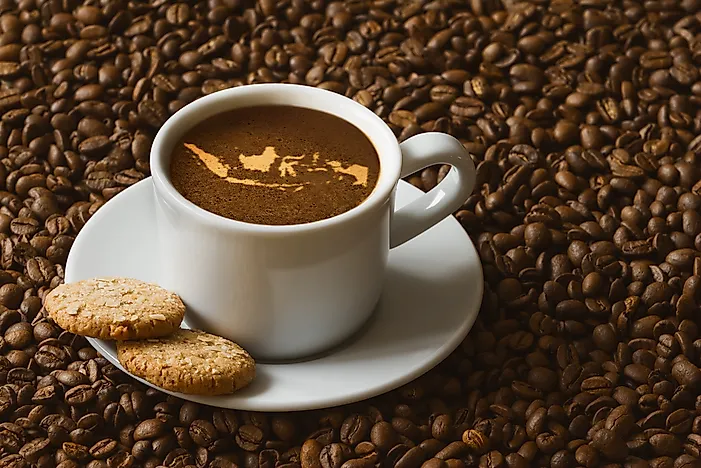
Espresso is the basis for most of the coffee and milk based beverages on the menu. The product expenses are around 15 cents to make a shot of espresso, and about 35-40 cents to make a latte, cappuccino or mocha ? Of course, staffing, equipment and location add a lot to the cost, however the low consumable expenses vs. high list prices are among the primary factors lots of coffee bars are emerging in the areas throughout America.
Follow the link for the full article cool espresso facts.
This guide offers the practical info needed for you to pick the ideal espresso devices for your house, office, or business. Without a firm understanding of the different espresso makers, the decision process might be complicated and somewhat frustrating just due to the fact there are a lot of models to select from. This guide is not very short, but investing the time to read it will considerably enhance your purchasing experience.
Espresso is merely another technique by which coffee is brewed. There are various ways of brewing coffee that include the use of a stove top coffee machine, percolator, French press (or coffee press), vacuum pot and others. Espresso is brewed in its own unique method.
Espresso is a beverage that is produced by pushing hot water, between 192F and 204F, at high pressures, through a bed of carefully ground, compacted coffee. A regular single is around 1 to 1.5 ounces of drink, utilizing around 7grams (or 1 tablespoon) of ground coffee. A regular double is between 2 and 3 ounces, using double the volume of coffee premises. The shot is brewed for approximately 25 to 30 seconds, and the exact same time applies to both a single or double shot (double baskets are larger, with more screen location, and the coffee flows faster - single baskets limit the flow more, resulting in 1.5 ounces in 25-30 seconds).
An espresso machine brews coffee by forcing pressurized water near boiling point through a "puck" of coffee grounds and a metallic filter in order to produce a syrupy, focused coffee called espresso. The first unit for brewing espresso was developed and patented in 1884 by Angelo Moriondo in Italy. Check this Twitter Moments collection for an in-depth introduction to the espresso machine.
⚡️ “How to Choose an Espresso Machine” by @coffeeblogger1 https://t.co/sTC6SIx6Yw
— Coffee Lover (@coffeeblogger1) February 28, 2021
Crema is one of the visual indicators of a quality shot of espresso. In Italy, where most true espresso is bought in a cafe, it is traditional to lift cup and dish, smell the shot, and consume it in 3 or 4 fast gulps.
Espresso is confusing because generally, it isn't prepared properly. True espresso, brewed with a pump or piston driven espresso machine is very requiring on the poor coffee bean grinds. However before we enter into the relative 'torture' that ground coffee is put through to produce an exceptional espresso, let us take a step back and talk about a bit more the misunderstandings about the beverage.
Espresso is not a type of bean: This is a common misconception, and inaccurate marketing by coffee chains, supermarket, and even word of mouth offer the impression that espresso is a type of bean. Any coffee bean can be utilized for espresso, from the most common Brazils to the most unique Konas and Ethiopian Harar coffees.
Espresso is not a type of coffee beans blend: This one is also a typical misconception, however with some fact to the claim in that there are specific blends designed for espresso. The problem is, many individuals think there is only one kind of blend that is suited for espresso. Many high quality micro roasters would disagree with this - Roaster Craftsmen the world over work diligently on their own variation of "the best espresso blend".
Espresso is not a Roast Type: Another popular misunderstanding is that espresso can just be roasted one way (and usually the thought is that espresso should be super dark and glistening with oils). The Northern Italian method of roasting for espresso is producing a medium roast, or more typically understood as a "Complete City" roast if you like on the west coast of the USA.
Espresso is the basis for most of the coffee and milk based beverages on the menu. Espresso is a drink that is produced by pushing hot water, between 192F and 204F, at high pressures, through a bed of finely ground, compressed coffee. True espresso, brewed with a pump or piston driven espresso device is extremely demanding on the bad coffee bean grinds. Espresso is not a type of blend: This one is likewise a typical misconception, but with some fact to the claim in that there are particular blends developed for espresso. Espresso is not a Roast Type: Another popular mistaken belief is that espresso can only be roasted one way (and usually the idea is that espresso must be very dark and glowing with oils).
The full post, and more espresso preparation information at Coffee-Brewing-Methods.com